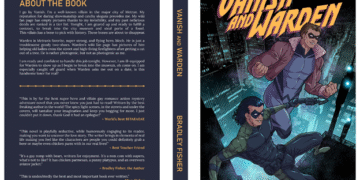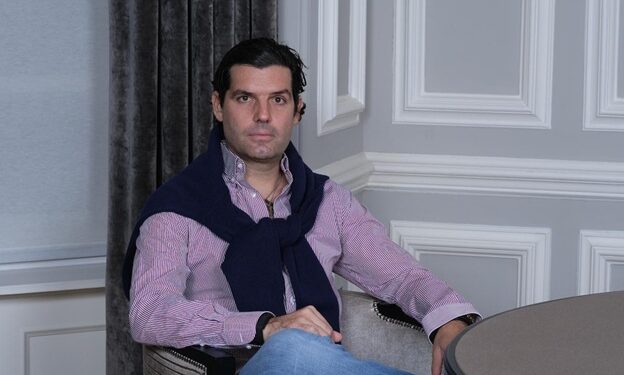Fintech investment is normalizing after two years of significant volatility, with funding slowly stabilizing as companies focus on proven business models rather than speculative growth. This return to fundamentals mirrors the diversification strategy that international business executive Alejandro Betancourt has employed across his portfolio companies for years, spreading investments across fashion, transportation, and financial services sectors.
His approach contrasts sharply with conventional investment wisdom that suggests concentrating on familiar industries. Instead, Betancourt built a portfolio spanning Hawkers sunglasses, Auro Travel ride-sharing, and BDK Financial Group banking operations. “I could be a good director for orchestra because I know how to play a little bit of every instrument, and that’s key for success,” he explained. This philosophy proves particularly relevant as 2025 fintech trends emphasize embedded finance, where non-financial businesses integrate financial services seamlessly into their platforms.
The Orchestra Director Philosophy
Alejandro Betancourt describes his diversification approach using a musical metaphor that captures both the complexity and coordination required for cross-sector investment success. His methodology centers on understanding multiple industries well enough to identify opportunities and manage risks across different market cycles.
This perspective enables him to recognize how different sectors influence each other, creating synergies that single-industry investors might miss. The approach becomes particularly valuable during periods of market uncertainty, when diversification provides stability against sector-specific downturns.
Current fintech developments validate this cross-industry thinking. Embedded finance, projected to reach $7.2 trillion by 2030, represents exactly the type of cross-sector opportunity that Betancourt’s approach is designed to capture. Companies like Hawkers can integrate payment processing, financing options, and customer data analytics—capabilities that become more valuable when combined with insights from transportation and banking sectors.
The executive’s hands-on involvement across different industries provides practical understanding that purely financial investors often lack. “I understand the basics of my investments, not everything in the world, but let’s put it this way. And I surround myself with good talent and people that I think can run them efficiently and I can understand what they’re doing,” he noted. This operational knowledge proves crucial when evaluating how fintech innovations might apply across different business models.
Cross-Sector Synergies in Practice
The convergence of fashion, transportation, and financial services creates opportunities that become apparent only when viewing these sectors as interconnected systems rather than isolated industries. Alejandro Betancourt’s portfolio positioning allows him to identify and capitalize on these intersections before they become obvious to market participants.
Consumer behavior patterns observed through Hawkers’ direct-to-consumer operations provide insights applicable to transportation and financial services. Digital marketing strategies, customer acquisition costs, and payment preferences learned in fashion retail translate directly to ride-sharing and banking applications. This cross-pollination of knowledge creates competitive advantages that single-sector investors cannot easily replicate.
Real-time payments, identified as a major 2025 fintech trend, demonstrate how insights from one sector inform opportunities in another. The rapid checkout experiences developed for fashion e-commerce directly apply to transportation payments, while the security and fraud prevention measures required for financial services enhance customer trust across all platforms.
Betancourt’s involvement in BDK Financial Group’s expansion across West African markets provides perspective on emerging market opportunities that could benefit both fashion and transportation ventures. Understanding regulatory frameworks, payment infrastructure, and consumer preferences in developing economies creates advantages for companies seeking international growth. “I make my investment, I make sure the structure of command is in place and I can go in and out as I please but it’s a standalone investment. It doesn’t need me, but it has my attention whenever I can be there,” he explained.
The integrated approach also provides natural hedging against sector-specific risks. When fashion retail faces economic headwinds, transportation and financial services might benefit from increased demand for cost-effective solutions. This balance helps maintain portfolio stability during uncertain market conditions.
Risk Management Through Portfolio Strategy
Modern fintech investment requires sophisticated risk management approaches, particularly as the sector matures beyond the explosive growth phase of recent years. Alejandro Betancourt’s portfolio construction philosophy provides a framework for managing both individual investment risks and broader market exposure.
“It’s a matter of getting a good sense of how well positioned you are in the different things that you’re doing,” he said. This positioning awareness becomes crucial as fintech companies face increasing regulatory scrutiny and market competition. The diversified approach allows for learning from challenges in one sector while applying solutions across the portfolio.
His risk management philosophy emphasizes long-term commitment combined with active monitoring. “I’m the person that, when things go bad, I sink with the ship. I don’t walk out of the ship. But those investments that have gone bad, if you hold them long enough, maybe they come back,” he noted. This approach proves particularly relevant for fintech investments, where regulatory changes and market shifts can create temporary setbacks that resolve over time.
The portfolio strategy also addresses concentration risk that affects many investors during technology boom cycles. Rather than betting everything on a single sector or trend, the diversified approach captures upside from multiple growth areas while limiting downside exposure. Current fintech trends toward sustainable finance and behavioral biometrics benefit from cross-sector insights that single-industry investors might overlook.
Fraud prevention represents another area where cross-sector experience creates advantages. Security challenges in fashion e-commerce, transportation platforms, and banking operations require different solutions, but the underlying principles of customer verification and transaction monitoring apply across all sectors. This comprehensive understanding of security requirements provides competitive advantages in an environment where cybersecurity concerns increasingly influence consumer behavior.
The executive’s emphasis on people over technology also provides risk mitigation advantages. “When I hire people, I take a really hard look at the experience they have. I like to know that they know more than me, that they’re better than me, that they have better knowledge than me in that industry,” he explained. This focus on human capital becomes particularly important as fintech companies compete for specialized talent across multiple disciplines.
Alejandro Betancourt’s diversification strategy offers lessons for investors evaluating opportunities in an increasingly connected business environment. The convergence of fashion, transportation, and financial services creates opportunities that require understanding multiple sectors simultaneously. His approach demonstrates how cross-industry insights can identify trends before they become widely recognized, while also providing protection against sector-specific risks that could derail concentrated investment strategies.
The success of this methodology becomes apparent as 2025 fintech trends emphasize exactly the type of cross-sector integration that his portfolio anticipates. Embedded finance, sustainable business practices, and technology-enabled customer experiences represent natural extensions of strategies he has employed across different industries for years.
Learn More: These 4 tips helped Leopoldo Alejandro Betancourt build his billion-dollar empire





























